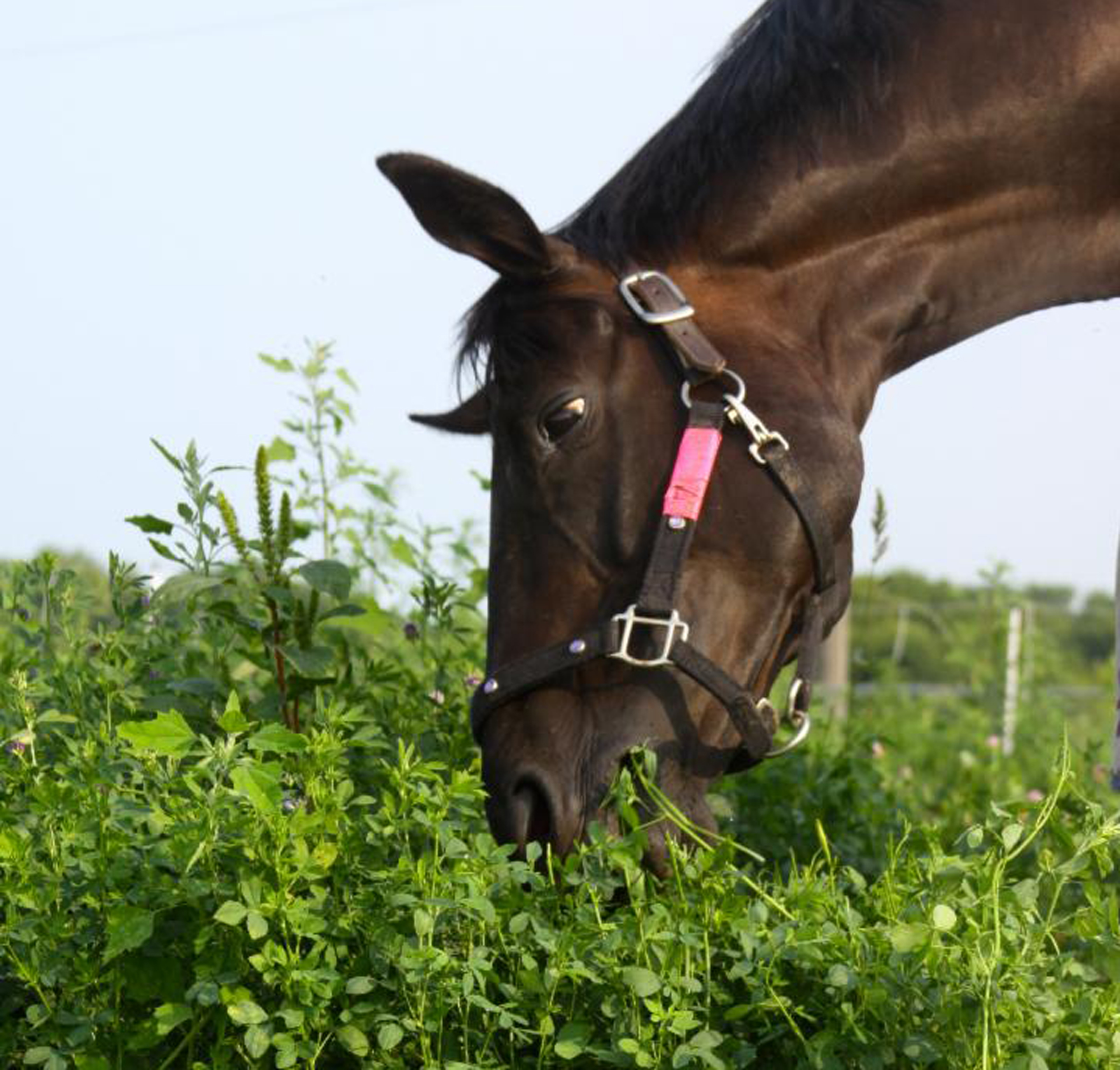
Editor’s note: The University of Minnesota conducted research over multiple years to determine the effect of grazing legume (e.g., alfalfa and clover) pastures on horses and on the pastures. Following is their report.
Legumes (e.g. alfalfa and clover) have the potential to provide high-quality pasture, but they are rarely grazed by horses in monoculture (pure) stands. The objectives of this research, conducted at the University of Minnesota, were to evaluate yield, forage nutritive value, and preference of alfalfa, red clover and white clover in monoculture or in mixture with perennial cool-season grasses under horse grazing.
Research was conducted over multiple years in Minnesota. Six adult horses rotationally grazed the pastures, and forages were measured for yield, forage nutritive value and preference at each grazing.
Alfalfa and alfalfa-grass pastures had the greatest yields compared to clover or clover-grass pastures. By the start of the third year, the pastures had damage that were likely from a combination of hoof traffic, grazing pressure and winter weather. Clover pastures had greater damage (e.g., bare ground) compared to the alfalfa pastures. When grass was added to the clover, these pastures had better persistence, or ground cover, compared to clover planted without grass.
All legume and legume-grass pastures provided a high level of nutrition and exceed the needs of an adult, idle horse. Horses displayed the strongest preference for red and white clover pastures; however, they highly preferred and readily consumed all legumes.
This research helps confirm that legumes are high in nutritive value, yield well, are a preferred forage option for horses, and should be considered as a viable grazing option for horses with increased energy and nutritional needs.
Authors of this research were Devan Catalano, MS, Craig Sheaffer, PhD, and Krishona Martinson, PhD, all of the University of Minnesota.


